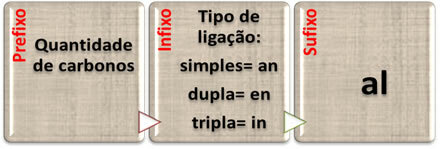Acid is any substance that ionizes in the presence of water and originates, as one of the ions, the H+ cation. Acids can be classified using several criteria, including:
degree of ionization: is represented by the symbol α and corresponds to the ratio between the number of ionizable molecules and the total number of dissolved molecules. Example: of every 100 molecules of HCl (hydrochloric acid) dissolved, 92 molecules undergo ionization.
Volatility: this criterion classifies the acid in terms of its ease of changing from a liquid to a gaseous state, they can be volatile or fixed:
volatiles: most acids are volatile. Example: when we open a bottle of vinegar, we soon notice its characteristic smell. This is because the acetic acid present in vinegar is a very volatile acid.
Fixed: are little volatile acids, the most common example is sulfuric acid.
Svante Arrehenius was a Swedish chemist who in 1887 carried out numerous experiments with substances diluted in water and created the above definition, and even made some observations about acids:
- When in aqueous solution, acids conduct electricity. This is because acids break down into ions.
- Acids ionize in aqueous solution, that is, they give rise to ions and the H+ cation.
- In neutralization reactions, acids react with bases, forming salts and water.
Other properties of acids:
Reaction with metals: Acids can react with many metals, thus generating hydrogen gas (H2) and a metal salt. Zinc and hydrochloric acid react with each other, this reaction can be represented by the equation:
Do not stop now... There's more after the advertising ;)
Zn (s) + 2 HCl (aq) → ZnCl2 (aq) + H2 (g)
Reaction with Carbonates and Bicarbonates: when reacting with acids, anions derived from Carbonates (CO2-3-) and Bicarbonates (HCO3-) release carbon dioxide. See the reaction:
CaCO3 (s) + 2 HCl (aq) → CaCl2 (aq) + H2O(1) + CO2 (g)
Carbonate
of calcium
Action on indicators: Acids change the color of certain substances called indicators, these change color depending on whether the medium is acidic or basic. Litmus and phenolphthalein are the most common indicators. The red phenolphthalein solution turns colorless in the presence of an acid. The blue litmus paper turns red.
By Líria Alves
Graduated in Chemistry
Would you like to reference this text in a school or academic work? Look:
SOUZA, Líria Alves de. "Classification and properties of acids"; Brazil School. Available in: https://brasilescola.uol.com.br/quimica/classificacao-propriedades-dos-acidos.htm. Accessed on July 27, 2021.


